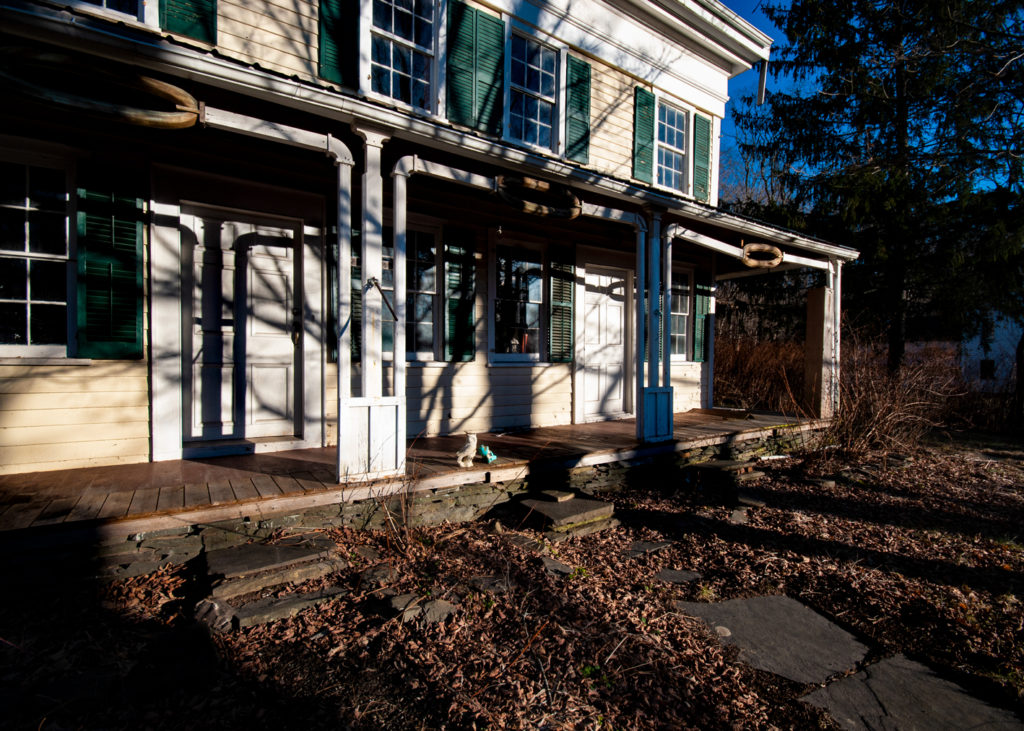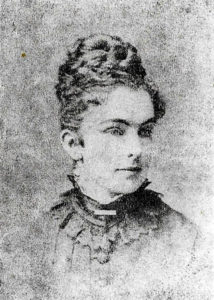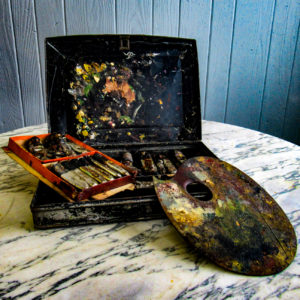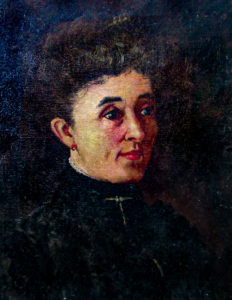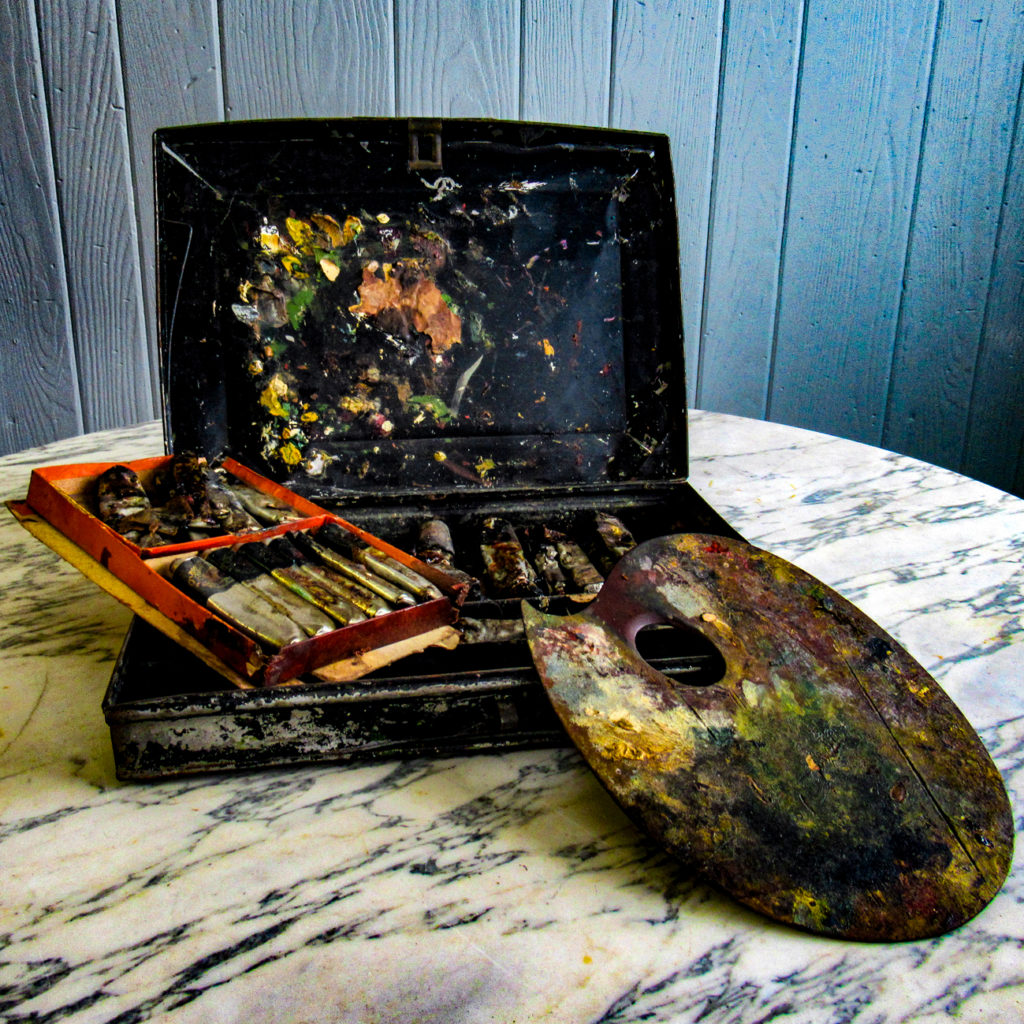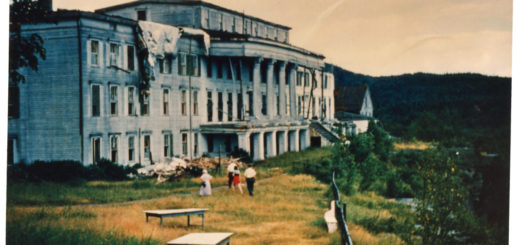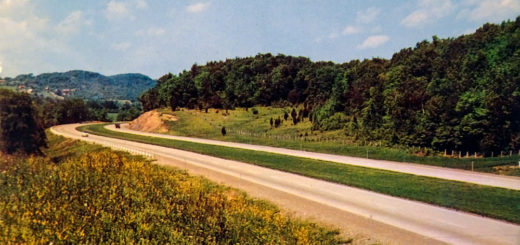The Artist Olive Cheritree
The materials for a full and satisfying biography of Olive Eliza Cheritree probably no longer exist. What remains are fragments, the scatterings of a creative life gone awry—a couple of photographs, a handful of paintings, an assortment of newspaper clippings, the inevitable hearsay. Also surviving is a small body of her writings—a self-published pamphlet titled Evolution and a copy of a long letter she wrote to a bishop of the Episcopal Church in New York, a letter that is, in effect, her memoir. Yet even these documents are difficult to come by. An internet search for the artist Olive Cheritree will take you from the hamlet of Oak Hill to the city of Paris and back, but will not get you far.
Cheritree was born in 1852. Her family was locally prominent and owned a successful foundry. Early in life, she expressed a talent for the arts. She was educated locally at Greenville Academy, then went on to study at the National Academy of Design in New York. In the late 1870s, she moved to Paris and studied with various painters, including Émile van Marcke, a pastoral painter best known for depictions of cows and dramatic cloudscapes. She also studied portraiture under the renowned art instructor Carolus-Duran. In 1881, one of her paintings was selected for the prestigious Paris Salon show. In the following years, she would achieve this honor three more times. Critics mentioned her work favorably. Her paintings commanded respectable prices. By all measures, the artist Olive Cheritree’s career appeared to be well-established.
But then something happened.
Cheritree started having visions. These began in Paris on the Monday after Easter, 1887, when she was living at 6 Avenue Montaigne. As she recounts it in her letter to the bishop, she was praying that morning and fell into a swoon. “I went down upon the floor by no power of my own.” She spent the day there, lying immobile, all the while praying, believing she could very well be dying. Eventually she regained control of her body. That evening while watching the fire, she saw in the burning coals “a picture of God, the Father, a glorious, perfect head of a man.” That image crumbled away. A little later she had another vision: “this time it was hell.” In her letter to the bishop, she describes this scene in elaborate detail. The next day Cheritree’s friend “Mrs. F.” arranged for a consultation with the rector of the American Cathedral in Paris, Rev. Dr. John B. Morgan, a cousin of the financier J.P. Morgan. The reverend recommended Cheritree be taken to a hospital. Hearing this, she dropped into another swoon. She was carried home by a couple of men and put on a couch. There she lay overnight in a catatonic state.
The next day Dr. Rev. Morgan came by to see her. Apparently, he was keen on the modish techniques of mesmerism and mind control. He tried some of his quackery on the still catatonic Cheritree. As she recounted it in her letter to the bishop: “Dr. Morgan asked me question after question. It was like ringing changes on every element, every line and direction of thought, until he had followed out one by one every one of them into every recess of the past, sounded my intentions for the future as well, and had there a perfect page of all I had ever done.” Her heart had been recklessly plumbed. The outcome of this session was that Cheritree now found herself in unremitting telepathic contact with the good reverend. “You will say it is impossible, that one person cannot come to another and read or follow his thoughts one after another, taking each to its extreme limit, with all its ramifications, and know you, in a way, as you are known. I say it is possible. I say, it is a fact, that Dr. Morgan did it, and as a result, I can at any moment speak to him across the water. I affirm it absolutely.” Sometime after Morgan left, Cheritree recovered her full senses and said all she needed now was a cold shower. A few days later, Dr. Morgan returned to her residence in a carriage. He informed her that he was taking her to “a Maison de Santé. I supposed it was some sort of a water-cure. It was an insane asylum.”
Cheritree’s story now takes a dark turn. The clarity and sophistication of her prose suggests she was far from crazy, at least at that point. She refused to cooperate with the medical authorities. “They, mistaking my disinclination toward having anything to do with them, for I do not know what, took me to another room still, very far back, tied me down on the most fearful looking sort of bed that you ever saw, in a regular dungeon, and left me there for the night.” Cheritree remained confined in that Parisian hospital for the next couple months until her brother and sister arrived from America to fetch her home. They packed up her house and studio—including a six-foot tall stack of her paintings—and shipped everything back to Oak Hill.
All the while, Cheritree kept insisting she was not crazy. “Placed under my brother’s and sister’s care, I suppose as semi-unaccountable for myself, with special instructions from Dr. Morgan that I was to be kept in America for two years, and that religious books and papers, pen, ink and pencil were to be kept away, I was never left for a moment to myself, I was not allowed to go to church, not allowed to write, nothing to do but think and wonder what I had done that was so wrong.” Deny anybody the opportunity to express themselves creatively and very likely they will go insane.
Ten years after her return home, a brief notice appeared in the Catskill Examiner: “Olive Cheritree, of Oak Hill, was committed to the Hudson River State Hospital at Poughkeepsie on Tuesday by Judge Sanderson. She was examined by Dr.s E.E. Elliott and C.E. Willard, who pronounced her insane. Miss Cheritree formerly resided in this village (Catskill). She built the River View Cottage and established an artist studio here. As an artist her pictures were admitted to the Paris Salon and her work was of a high order of merit. Her mind had been more or less affected for several years with a religious mania. She was the author of a pamphlet on “Evolution,” published while she was in Catskill. The work strongly indicated that her mind was not right.” I don’t know about that. The same could be said—perhaps more squarely—about the writings of Emanuel Swedenborg, Jakob Boehme, or Mary Baker Eddy, but nobody incarcerated those authors.
In any case, Olive Cheritree spent the next twenty-six years in the state hospital at Poughkeepsie, where she may or may not have continued making her paintings. I hope she did. It was reported that she passed the time by translating passages of the Bible into French. She died at the state hospital on January 19th, 1924. According to the death certificate, the cause was “acute cholecystitis [inflammation of the gall bladder] with peritonitis.” The obituary in the Catskill Recorder noted that this newspaper had “proudly chronicled Miss Cheritree’s prowess in Paris, where she was a painter of the highest promise, exhibiting her pictures at the Salon and sometimes selling them before they left the studio.” The obituary writer concludes: “About thirty years ago her mind utterly gave way and her sorrowing family removed her to an asylum where she has since remained, hopelessly insane. Death came as an early end of a sadly chequered life, beginning in brilliant hope and ending in long, protracted doom.”
The artist is buried in the Cheritree family plot in the Oak Hill Cemetery, on a prominence overlooking Catskill Creek and the northern escarpment of the mountains. The marker is inscribed only with names and dates. Tombstones offer next to nothing when it comes to piecing together the story of a life, especially a life as remarkable and inscrutable as Olive Cheritree’s. Perhaps she would be better served by a poem. Maybe this one, by Emily Dickinson:
Much madness is divinest sense
To a discerning eye;
Much sense the starkest madness.
‘T is the majority
In this, as all, prevails.
Assent, and you are sane;
Demur, — you’re straightway dangerous,
And handled with a chain.
©John P. O’Grady
Originally appeared in The Mountain Eagle on January 18, 2019
